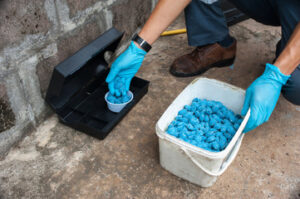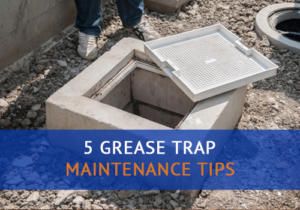Tree Service companies provide services that keep trees healthy and safe. They trim branches that could fall and damage property, and they remove dead or dying trees to prevent fire hazards.

When choosing a tree service, look for a company with a good reputation and knowledgeable staff. It should also carry a valid certificate of insurance covering liability and workers’ compensation. Visit https://www.lee-tree-service.com to learn more.
When you want to add trees to your property, tree service experts can help you select the appropriate species based on soil conditions and space availability. They also provide guidance on proper care and maintenance to help ensure the longevity of your plants. In addition, tree services can help improve the aesthetics of your outdoor spaces and protect your home or commercial property from storm damage.
When selecting a tree service company, it’s important to find one with an accredited arborist. This means they’re a member of the Tree Care Industry Association (TCIA), which keeps them up to date on best practices in the industry. You should also look for insurance coverage, including liability and worker’s compensation. This will protect you in case of an accident or injury while a contractor is working on your property.
Tree services can offer a wide range of landscape and maintenance services, including planting, pruning, trimming, stump removal, and emergency response. They can plant trees and shrubs to enhance the beauty of your outdoor space, improve curb appeal, and increase the value of your property. They can also provide regular tree trimming and pruning to promote growth, reduce the risk of storm damage, and prevent disease and insect infestations.
The best time to plant trees is generally spring or fall. These seasons provide ideal environmental conditions, such as warm soil temperatures and reduced competition from grass and other plants. However, your local climate and environment may require a different time to plant. Regardless of the season, it’s important to water newly planted trees frequently and thoroughly. In addition, fertilizer should be avoided at all costs, as excessive nitrogen can lead to new growth that competes with root development.
The specialized tools and equipment required to perform tree service work can be expensive and hazardous to operate without the right training and experience. That’s why it’s important to partner with a reputable tree service company that offers competitive prices and quality results. The type of services a tree service company offers can have a big impact on its profitability. Lower-value services such as mowing and pruning are easier to market and more reliable than more complex, specialty jobs that require more training and equipment.
Pruning
Trees and shrubs require regular pruning to maintain their health and appearance. Pruning removes dead branches, reduces structural risk and promotes new growth that is strong and healthy. It also helps trees produce ecosystem services like absorbing carbon dioxide, providing shade and reducing soil erosion. Trees that are not pruned regularly are more likely to be damaged by storms or fall over and cause property damage.
Proper pruning is a skill that requires special knowledge and training to conduct. Homeowners can trim small limbs and branches with shears, but larger projects should be left to professionals. Arborists have the skills, tools and experience to make precise cuts that will minimize wounds to a tree, allowing it to heal quickly and reduce susceptibility to disease.
A professional tree service company will use a variety of tools and methods for pruning, depending on the needs of each customer. For example, if a tree is located near power lines or utilities, the service will need to take extra care to ensure the safety of their workers and any passers-by. This can be done by using a bucket truck or crane, which allow the crew to safely remove large branches without having to scale the tree.
When performing this work, tree service crews will also consider the overall structure of a plant and how it can be managed for safety, aesthetics and function. For instance, a tree may need to be thinned to remove excessive foliage that can become too heavy for the tree, which increases the likelihood of failure during a storm or block visibility on a roadway.
Other reasons for trimming a plant include reducing pest populations, removing diseased or dying limbs and increasing airflow and sunlight penetration. In addition, pruning allows a homeowner to manage the size and shape of a plant and can improve the curb appeal of a property. The best time to prune a plant is in the winter, but minor pruning can be conducted at any time. However, if you want to perform your own pruning, avoid cutting a tree during hot weather. High temperatures can put additional stress on plants and lead to severe damage or death if improperly executed.
Removal
Getting rid of a tree can be costly, but it’s often necessary to prevent damage to buildings, cars, and pedestrians. A professional service will use specialized equipment to remove the tree without damaging surrounding plants or structures. This may include cutting the trunk, branches, and roots. Then, the remaining debris will be ground up and mulched to reuse or dispose of depending on local regulations.
Some signs that a tree is in danger of dying or falling include defoliation, small broken branches, and a leaning trunk. These symptoms indicate that the tree isn’t healthy enough to be restored and must be removed.
Another reason for removal is that a tree has been damaged by a storm or weakened by age. If a large branch falls on your home or car, it can be devastating. A skilled arborist will examine the tree and determine whether it’s safe to remove it.
A professional service can also remove a tree if it’s in the way of a walkway, driveway, or building. This may also be the case for trees that are encroaching on power lines or whose root systems are growing into foundations.
Trees are a beautiful addition to any landscape, but they also add value and beauty to your property. It’s important to keep them maintained, as they can increase your property’s value and provide many benefits. However, sometimes a tree needs to be removed due to disease or poor location.
Before you hire a tree service, check the area to make sure that it is free of obstacles and debris. Make sure that the weather is clear and avoid rainy days; slippery, wet, and muddy conditions can be dangerous. Also, water the roots of the tree the day before the planned removal to soften the soil and make it easier to dig.
It is also crucial to know that this type of work requires a license and insurance coverage. You should ask the company about their credentials and make sure that they are fully insured. This is to protect you against liability in case something goes wrong during the removal process. In addition, a reputable tree service will take a controlled approach to dismantling the tree and will use proper safety precautions at all times.
Emergency Response
Trees are a beautiful and valuable part of our landscapes. They provide shade, enhance our homes’ curb appeal, and contribute to a sense of tranquility. However, beneath their serene facade lies a ticking time bomb that can wreak havoc on people and property if left unattended. A single gust of wind or the natural progression of disease can cause an unstable tree to collapse, causing serious damage. In these cases, emergency response services are critical to protect the safety of people and property.
There are many different situations that qualify as a tree emergency, from a downed tree to limbs hanging dangerously over a house or car. It is crucial to seek help from a tree service company as soon as possible to minimize the risk of damage and loss.
A tree service company’s emergency response team can perform a number of important tasks, including assessing the severity of the situation and determining what steps need to be taken to resolve it. This process starts with a detailed inspection of the affected tree and the surrounding area. This assessment allows the arborist to identify any potential hazards and create a safe working environment for the removal process.
Once the damaged tree or limb has been removed, the team can also secure the location. This may include placing tarps over exposed roof areas or other vulnerable points of entry. In addition, the team can also assess the cause of the emergency and recommend any necessary preventive measures to avoid future incidents.
While regular maintenance and periodic assessments can prevent most problems, sometimes a tree becomes unsafe without warning. Even healthy trees can be weakened by storms, disease, or internal decay, making them a danger to those in their vicinity. In these cases, emergency tree service can protect your home and family by addressing the risk promptly and safely.
Investing in emergency response services from a professional tree service company is an investment in the long-term value of your home and property. It can protect the safety of your loved ones, prevent damage to your home or vehicle, and maintain your property’s curb appeal.








